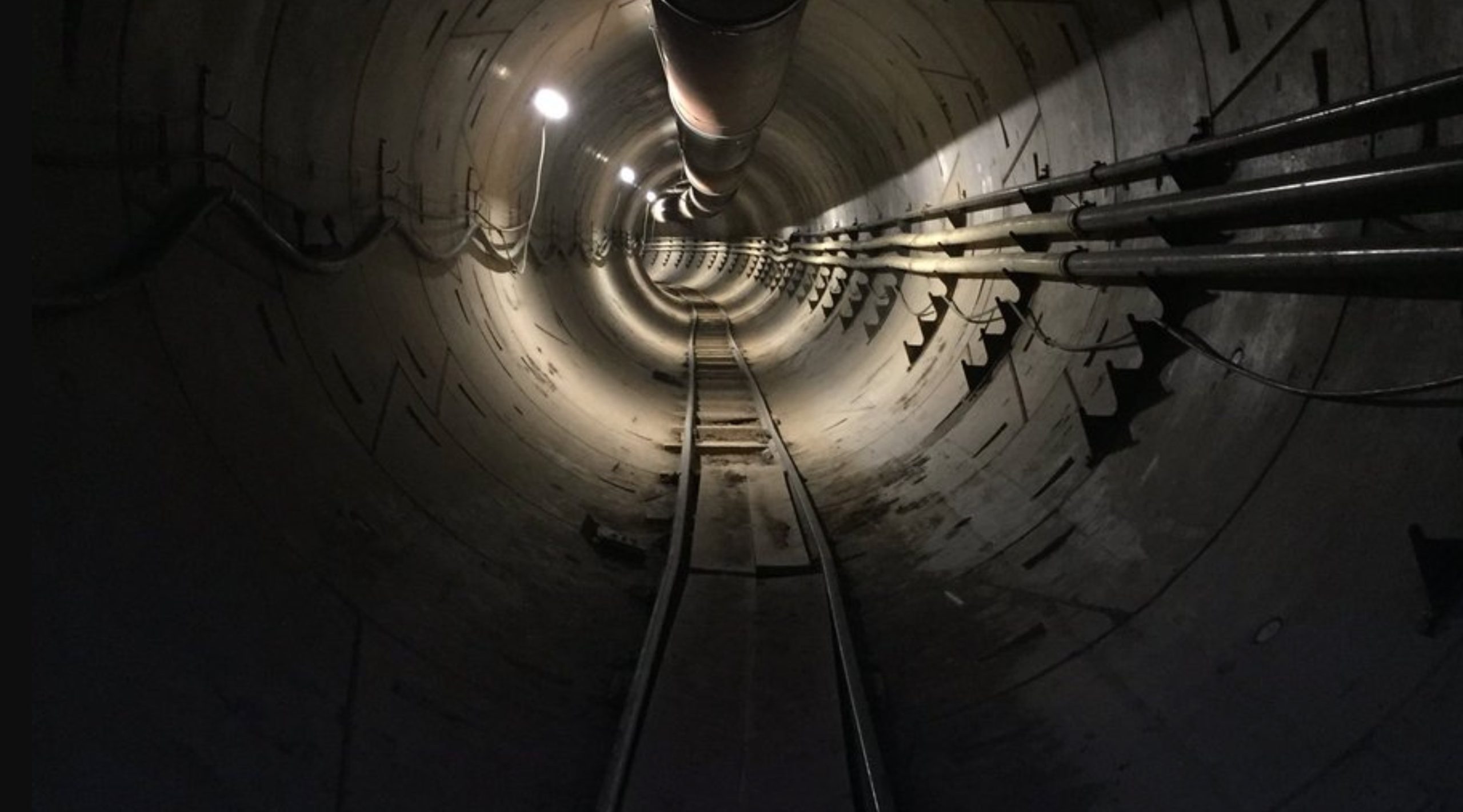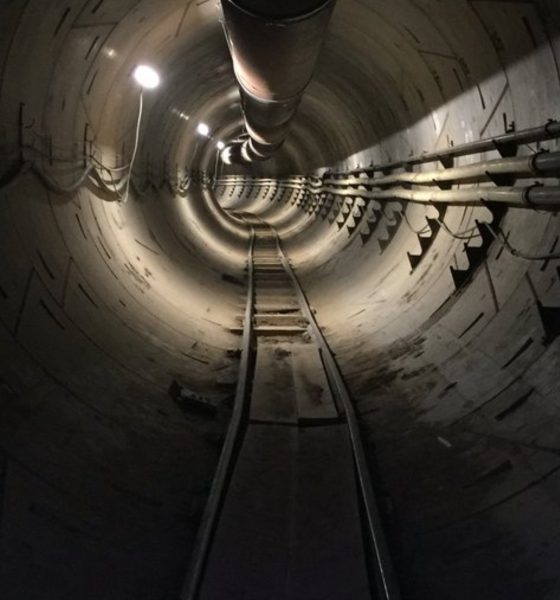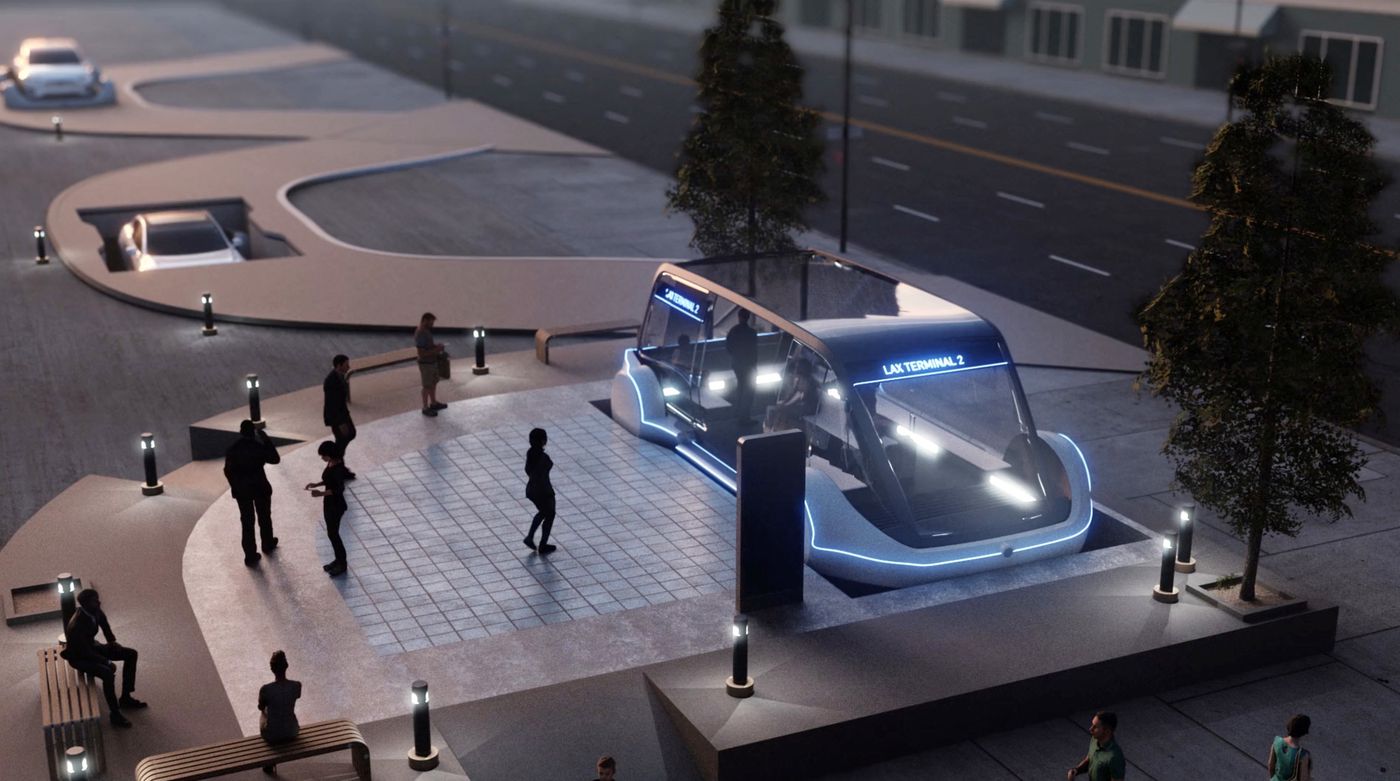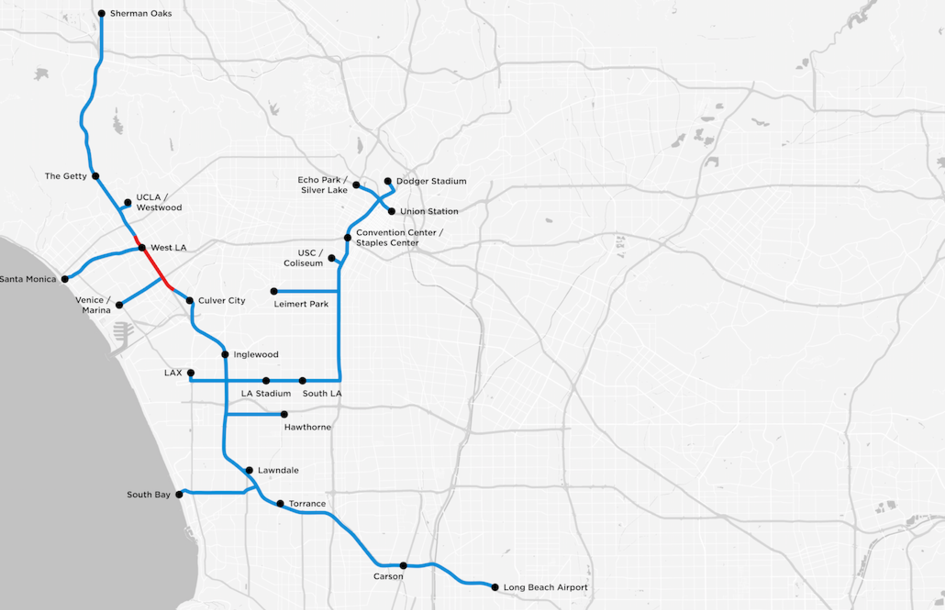

News
Elon Musk’s Boring Company abandons one of its planned LA tunnel projects
As The Boring Company prepares to hold a public showing for its first completed tunnel this coming December 10, Elon Musk’s tunneling startup has revealed that it is dropping its plans to dig a tunnel under Sepulveda Blvd. on the Westside of LA. The company’s decision to abandon its project comes amidst its settlement with a group of Westside advocates who alleged that local government violated state law when it decided to exempt the Boring Company’s proof-of-concept tunnel from review under the California Environmental Quality Act (CEQA).
In a joint statement on Tuesday, The Boring Company, together with the plaintiffs of the case, stated that they have “amicably settled” the lawsuit. The terms of the two parties’ settlement remain confidential, though, as noted by an attorney for the Westside advocates to The San Diego Union-Tribune. With plans for the Sepulveda Blvd tunnel now abandoned, The Boring Co. would be focusing on building the Dugout Loop, a tunnel system connecting the Dodger Stadium and a Metro station, instead.
The legal opposition against the Sepulveda tunnel emerged last May, when two local neighborhood groups — the Brentwood Residents Coalition and the Sunset Coalition — filed a lawsuit, alleging that the project is actually part of a larger system of tunnels that would be used for public transportation in the future.

The tunneling startup was moving briskly through the permit process then, partly since The Boring Company noted that the tunnel would not be used to transport commuters, allowing the project to gain an exemption from environmental review. This was indicated on The Boring Company’s FAQ on its website.
“The tunnel would be used for construction logistics verification, system testing, safety testing, operating procedure verification, and line-switching demonstrations. Phase 1 would not be utilized for public transportation until the proof-of-process tunnel is deemed successful by County government, City government, and TBC.”
At the heart of the plaintiffs’ lawsuit was a map that The Boring Company released for its planned tunnel routes. Included in the proposed routes was a line that appeared to trace the route of the Sepulveda Blvd tunnel. In their lawsuit, the plaintiffs noted that “the state’s stringent environmental review requirements cannot be evaded by chopping large projects into smaller pieces that taken individually appear to have no significant environmental impacts.” The Westside advocates also voiced their disapproval of the city’s commission to approve a route that The Boring Company would use for hauling 80,000 cubic yards of dirt from the tunnel.

The Boring Company’s projects in LA’s Westside have attracted their own fair share of critics. When the advocates filed their lawsuit earlier this year, for one, Santa Monica City Manager Rick Cole aired his skepticism of the tunneling startup’s concept as a whole.
“We’ll have people stuck in traffic on the surface, and this miracle fast lane underground for the people who can afford it. It’ll be toll lanes on steroids,” he said, according to the Los Angeles Times.
While The Boring Company’s settlement with the Westside advocates is a notable roadblock to its projects in the LA area, the tunneling startup is nonetheless making progress on its other activities. The test tunnel under the SpaceX headquarters in Hawthorne is now getting refined and is set for public viewing on December 10, and the construction of a prototype garage-elevator that connects directly to a tunnel is seeing a lot of activity. Permits to establish The Brick Store, an outlet where Boring Bricks would be sold, have also been filed.
Apart from these, the tunneling startup is preparing to start its most ambitious project to date — the high-profile Chicago-O’Hare high-speed transport line, which is expected to begin construction soon. Updates about the project have been scarce so far, though photographs taken by Teslarati photographers Pauline Acalin and Tom Cross suggest that a gantry for the Chicago tunnel line, as well as what appears to be a next-generation Tunnel Boring Machine, is under construction.

Elon Musk
Elon Musk’s X will start using a Tesla-like software update strategy
The initiative seems designed to accelerate updates to the social media platform, while maintaining maximum transparency.

Elon Musk’s social media platform X will adopt a Tesla-esque approach to software updates for its algorithm.
The initiative seems designed to accelerate updates to the social media platform, while maintaining maximum transparency.
X’s updates to its updates
As per Musk in a post on X, the social media company will be making a new algorithm to determine what organic and advertising posts are recommended to users. These updates would then be repeated every four weeks.
“We will make the new 𝕏 algorithm, including all code used to determine what organic and advertising posts are recommended to users, open source in 7 days. This will be repeated every 4 weeks, with comprehensive developer notes, to help you understand what changed,” Musk wrote in his post.
The initiative somewhat mirrors Tesla’s over-the-air update model, where vehicle software is regularly refined and pushed to users with detailed release notes. This should allow users to better understand the details of X’s every update and foster a healthy feedback loop for the social media platform.
xAI and X
X, formerly Twitter, has been acquired by Elon Musk’s artificial intelligence startup, xAI last year. Since then, xAI has seen a rapid rise in valuation. Following the company’s the company’s upsized $20 billion Series E funding round, estimates now suggest that xAI is worth tens about $230 to $235 billion. That’s several times larger than Tesla when Elon Musk received his controversial 2018 CEO Performance Award.
As per xAI, the Series E funding round attracted a diverse group of investors, including Valor Equity Partners, Stepstone Group, Fidelity Management & Research Company, Qatar Investment Authority, MGX, and Baron Capital Group, among others. Strategic partners NVIDIA and Cisco Investments also continued support for building the world’s largest GPU clusters.
News
Tesla FSD Supervised wins MotorTrend’s Best Driver Assistance Award
The decision marks a notable reversal for the publication from prior years, with judges citing major real-world improvements that pushed Tesla’s latest FSD software ahead of every competing ADAS system.

Tesla’s Full Self-Driving (Supervised) system has been named the best driver-assistance technology on the market, earning top honors at the 2026 MotorTrend Best Tech Awards.
The decision marks a notable reversal for the publication from prior years, with judges citing major real-world improvements that pushed Tesla’s latest FSD software ahead of every competing ADAS system. And it wasn’t even close.
MotorTrend reverses course
MotorTrend awarded Tesla FSD (Supervised) its 2026 Best Tech Driver Assistance title after extensive testing of the latest v14 software. The publication acknowledged that it had previously criticized earlier versions of FSD for erratic behavior and near-miss incidents, ultimately favoring rivals such as GM’s Super Cruise in earlier evaluations.
According to MotorTrend, the newest iteration of FSD resolved many of those shortcomings. Testers said v14 showed far smoother behavior in complex urban scenarios, including unprotected left turns, traffic circles, emergency vehicles, and dense city streets. While the system still requires constant driver supervision, judges concluded that no other advanced driver-assistance system currently matches its breadth of capability.
Unlike rival systems that rely on combinations of cameras, radar, lidar, and mapped highways, Tesla’s FSD operates using a camera-only approach and is capable of driving on city streets, rural roads, and freeways. MotorTrend stated that pure utility, the ability to handle nearly all road types, ultimately separated FSD from competitors like Ford BlueCruise, GM Super Cruise, and BMW’s Highway Assistant.
High cost and high capability
MotorTrend also addressed FSD’s pricing, which remains significantly higher than rival systems. Tesla currently charges $8,000 for a one-time purchase or $99 per month for a subscription, compared with far lower upfront and subscription costs from other automakers. The publication noted that the premium is justified given FSD’s unmatched scope and continuous software evolution.
Safety remained a central focus of the evaluation. While testers reported collision-free operation over thousands of miles, they noted ongoing concerns around FSD’s configurable driving modes, including options that allow aggressive driving and speeds beyond posted limits. MotorTrend emphasized that, like all Level 2 systems, FSD still depends on a fully attentive human driver at all times.
Despite those caveats, the publication concluded that Tesla’s rapid software progress fundamentally reshaped the competitive landscape. For drivers seeking the most capable hands-on driver-assistance system available today, MotorTrend concluded Tesla FSD (Supervised) now stands alone at the top.
News
Elon Musk’s Grokipedia surges to 5.6M articles, almost 79% of English Wikipedia
The explosive growth marks a major milestone for the AI-powered online encyclopedia, which was launched by Elon Musk’s xAI just months ago.

Elon Musk’s Grokipedia has grown to an impressive 5,615,201 articles as of today, closing in on 79% of the English Wikipedia’s current total of 7,119,376 articles.
The explosive growth marks a major milestone for the AI-powered online encyclopedia, which was launched by Elon Musk’s xAI just months ago. Needless to say, it would only be a matter of time before Grokipedia exceeds English Wikipedia in sheer volume.
Grokipedia’s rapid growth
xAI’s vision for Grokipedia emphasizes neutrality, while Grok’s reasoning capabilities allow for fast drafting and fact-checking. When Elon Musk announced the initiative in late September 2025, he noted that Grokipedia would be an improvement to Wikipedia because it would be designed to avoid bias.
At the time, Musk noted that Grokipedia “is a necessary step towards the xAI goal of understanding the Universe.”
Grokipedia was launched in late October, and while xAI was careful to list it only as Version 0.1 at the time, the online encyclopedia immediately earned praise. Wikipedia co-founder Larry Sanger highlighted the project’s innovative approach, noting how it leverages AI to fill knowledge gaps and enable rapid updates. Netizens also observed how Grokipedia tends to present articles in a more objective manner compared to Wikipedia, which is edited by humans.
Elon Musk’s ambitious plans
With 5,615,201 total articles, Grokipedia has now grown to almost 79% of English Wikipedia’s article base. This is incredibly quick, though Grokipedia remains text-only for now. xAI, for its part, has now updated the online encyclopedia’s iteration to v0.2.
Elon Musk has shared bold ideas for Grokipedia, including sending a record of the entire knowledge base to space as part of xAI’s mission to preserve and expand human understanding. At some point, Musk stated that Grokipedia will be renamed to Encyclopedia Galactica, and it will be sent to the cosmos.
“When Grokipedia is good enough (long way to go), we will change the name to Encyclopedia Galactica. It will be an open source distillation of all knowledge, including audio, images and video. Join xAI to help build the sci-fi version of the Library of Alexandria!” Musk wrote, adding in a later post that “Copies will be etched in stone and sent to the Moon, Mars and beyond. This time, it will not be lost.”








